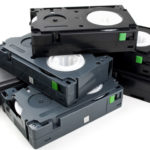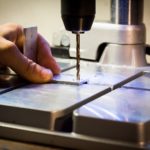7 Environmentally Friendly Technologies of Fashion Production that Come to Light
The fashion industry is one of the world’s largest. Furthermore, it is one of the most wasteful, accounting for 20% of world water waste and 10% of carbon emissions. Every second, the equivalent of a garbage truck’s worth of textiles is filled or burned. Even though clothing is a need and fashion is a personal expression, the current textile waste surpasses the industry’s benefits.
The trend will continue unless innovative fashion production solutions are found.
Fortunately, innovations are afoot in the fashion industry that has the potential to transform this model over time and pave the way for a more environmentally friendly apparel business model.
Fashion Technologies For Long-Term Fashion Manufacturing
In today’s reality, consumers are increasingly focused on the businesses they buy from in order to reduce the environmental impact of their purchases. Three-fifths of individuals now feel that environmental effect is an essential element in purchase decisions, according to McKinsey. The fashion industry’s technological trends are beginning to reflect this.
With the advancement of emerging technologies in the fashion sector, we are focusing on resolving the root reasons of the struggle for fashion’s long-term viability. By integrating new technology in fashion companies, we can create the sustainable future that your clients desire by enhancing personalization and promoting reuse as much as feasible.
Over the next decade, emerging fashion technologies that alter goods, materials, and the user experience are projected to have a significant impact on waste reduction. The new potential to recycle clothes is frequently referred to as a circular fashion economy. Here are seven amazing technologies that have transformed production and recycling, making fashion more sustainable.
1. Virtual 3D Sampling
Body models have long been an important part of the design and sales process. They gave accurate product displays, but virtual sampling has already achieved digital full-line review, decreasing waste in design and product development, thanks to the advancement of 3D technology.
2. Unconventional Textiles
The materials often used in clothes use a lot of water for production and degrade slowly. Recycled fiber generated from agricultural waste such as leaves and peels is one environmentally acceptable textile solution. These new textiles produce less waste, are wear-resistant, and are biodegradable during the manufacturing process.
3. Automated Manufacturing on-Demand
In the future of fashion, on-demand design and manufacturing will be critical. Although single-piece and small-batch manufacturing costs are greater today, automation and innovation in manufacturing, along with cost savings from lower returns and guaranteed sales, will more than offset these costs over time.
4. Mobile Body Scanning
Body scans give a solution for the lack of knowledge about body size and type. Instead of relying on standard fit models, companies can collect data and measurements of their customers to create clothing that would better fit various body shapes. The result is better-fitting apparel, which reduces returns and helps to decrease the environmental impact of retail. 3DLOOK’s solution helps to implement the digital body measurement process.
5. Virtual Fitting Room Technology
3D enables brands to offer virtual experiences previously only available offline. Mobile 3D body scans use hundreds of data points to build 3D images, allowing customers to see how items fit right away.
Brands also will manage to balance profitability by implementing a virtual try on clothes solution.
6. Circularizing Fashion
As buyers and retailers become increasingly aware of the large amount of trash produced by the fashion industry, new measures to avoid waste are launched. The Make Fashion Circular program brings together major brands such as Burberry, Gap, H&M, Nike, and Stella McCartney.
The circular economy concept tries to design products and waste in industrial processes in such a way that resources and products may be reused as much as feasible. This is accomplished by repurposing renewable materials and outdated clothing to create new clothes.
7. Re-Commerce: Everything Old Can be Made New Again
Upcycling, a term that refers to the process of repurposing old clothes to make new ones, and second-hand sales are two methods for reducing waste. Resale provides the wardrobe-rotating excitement of quick fashion without the guilt or waste, and it is predicted that within 10 years, secondhand would outnumber mainstream fast fashion.
Summing Up: Why New Technologies are Important to Fashion
It is critical to embrace digital transformation to minimize inefficient practices in the fashion sector. Substantial businesses in the sector are turning away from wasteful methods of the past and embracing technology to help bring about major improvements as consumers grow more environmentally concerned.
Making use of emerging 3D technology will benefit all stages of the supply chain, with the advantages eventually being passed on to consumers. Contact 3D LOOK today to learn more about how sustainability is benefiting both retailers and consumers in the fashion industry.











